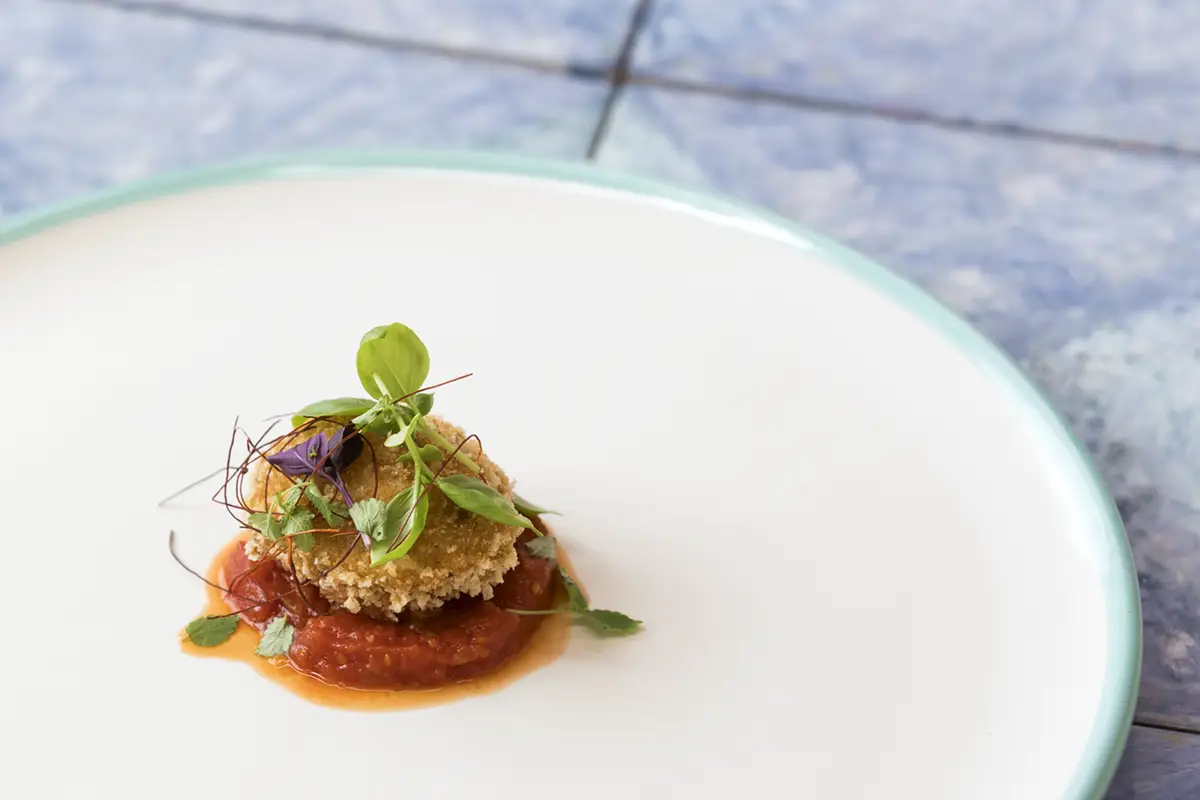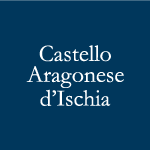The menus of LA CUCINA DEL MONASTERO
Our kitchen, under the direction of Chef Michelangelo Iacono, takes guests on a journey to discover the flavours of Ischia, with three menus that pay homage to the island's traditions.

Chef Iacono deserves credit for wanting to pay homage to both island traditions and for being the first on Ischia to adopt the concepts of Merecoppe, Merevascio, and Cala Cala (a skilful blend of the two cuisines) in the kitchen, creating the tasting menus that characterise our offer. Insula minor, an all-vegetarian proposal, was added to these.
The aim is to offer simple but refined dishes that highlight the raw ingredients, always of excellent quality, from the vegetables — mostly grown in our 100% organic garden (which can be visited on request) or bought from local farms — to the fish and meat — always fresh — and the bread, baked daily with sourdough.
Merecoppe
It is a tribute to the local cuisine of our island: the term Merecoppe (from the Greek "mèros", which means part, region, and from the Neapolitan dialect expression "n'copp", which means above, on top) translates as "upper part of the island" and refers to the hilly areas, mostly rural in nature. In Merecoppe, people lived on the fruits of the land, bred rabbits and made wine, eating mainly white meat, eggs, potatoes and lots of vegetables.
Raw and cooked seasonal vegetables
Bio local egg 'a zuppetella'
Spring raviolo 'water and flour'
Candele pasta with rabbit sauce
Miniature Neapolitan "braciole"
Little desserts
Merevascio
The menu is a tribute to the Ischian seafood cuisine; the term Merevascio (from the Greek "mèros", meaning part, region, and from the Neapolitan dialect expression "vascio", meaning below) means "lower part of the island" and refers to the coastal areas of Ischia. The inhabitants of Merevascio were almost all fishermen or small merchants, who ate mainly fish and seafood.
Tartare of the day with roasted 'torciuta' escarole
Prawns, artichoke and potatoes
Citrus risotto with squid and wild fennel
Pasta and peas with cabbage and shellfish
Catch of the day with spring vegetables
Little desserts
Cala Cala
The rivalry between Merecoppe and Merevascio was overcome from time to time by the practice of Cala Cala, or the exchange of products between fishermen and farmers. From the land overlooking the sea of Cartaromana, the peasants would lower a basket of vegetables, wine and meat to the fishermen waiting on the boats down below; the basket would come back up, in the bucolic world of Merecoppe, full of shining fish.
Fish carpaccio with 'cipeccia' (sweet onion) and 'cappuccia' (white cabbage)
Prawns, artichoke and potatoes
Citrus risotto with squid and wild fennel
Pasta and peas with cabbage and shellfish
Codfish and chickpeas from Buonopane
Little desserts
Insula minor
The islet on which the Aragonese Castle stands was called Insula Minor ("minor island", as opposed to the Insula Maior, "major", or Ischia). Five hundred years ago, the Poor Clare nuns drew their main sustenance from the convent's hortus conclusus, that space protected from the wind and indiscreet eyes that is now our kitchen garden. Based on Merecoppe and Merevascio, we have created a menu for those who have chosen a vegetarian diet, so that you can enjoy the flavours, colours and aromas of our cuisine with a light heart.
Raw and cooked seasonal vegetables
Bio local egg 'a zuppetella'
Spring raviolo 'water and flour'
Neapolitan pasta risotto
Artichoke and potatoes
Little desserts


